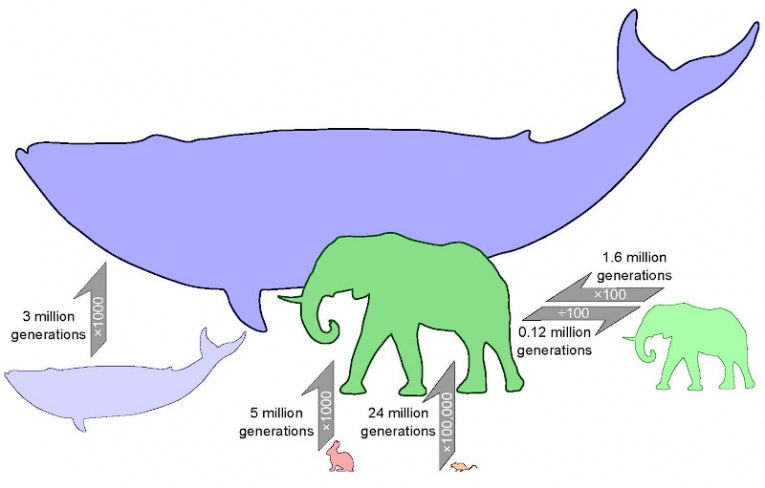The jumbo evolution from a mouse-sized mammal to the size of elephant takes around 24 million generations, scientists calculate. But the reverse process is much quicker just with large size decreases seen after just 100,000 generations, ultimately leading to extreme dwarfism, says the international research team.
The pioneeing research examines how fast the size of mammals increased and decreased after the extinction of the dinosaurs 65 million years ago. The study is unique, as previous research has concentrated on microevolution - smaller changes within species - the team believes.
Lead author, Dr Alistair Evans from Monash University's School of Biological Sciences, says, "We concentrated on large-scale changes in body size. We can now show that it took at least 24 million generations to make the proverbial mouse-to-elephant size change - a massive change, but also a very long time.
"A less dramatic change, such as rabbit-sized to elephant-sized, takes 10 million generations."
Co-author, Dr. Jessica Theodor, from the University of Calgary, explains "Our research demonstrates, for the first time, a large-scale history of mammal life in terms of the pace of growth. This is significant because most research focuses on microevolution, which are changes that occur within a specific species."
Dr Evans, an evolutionary biologist was surprised that a reduction in body size was more than ten times faster than an increase. "The huge difference in rates for getting smaller and getting bigger is really astounding - we certainly never expected it could happen so fast!"
Miniature animals were often found on islands, says Dr Evans, who is an Australian Research Fellow. "When you do get smaller, you need less food and can reproduce faster, which are real advantages on small islands."
Dr Theodor says, "Many of the species which shrunk, such as the dwarf mammoth, dwarf hippo and dwarf hominids, found in the Indonesian island of Flores, became extinct.
"What caused their dwarfism? They may have needed to be small to survive in their environment or perhaps food was scarce and a small stature would require less nutrients."

A mouse-to-elephant size change would take at least 24 million generations based on the maximum speed of evolution in the fossil record. Becoming smaller can happen much faster than becoming bigger: the evolution of pygmy elephants took 10 times fewer generations than the equivalent sheep-to-elephant size change; Credit: Alistair Evans, David Jones
The research, involving 20 palaeontologists and biologists studying 28 mammal groups, has just been published online in the Proceedings of the National Academy of Sciences.
The mammals, including elephants, primates and whales lived during the past 70 million years. Size change was measured in generations rather than yerars to help compare species with different life spans. The results showed it took at least 1.6 million generations for terrestrial mammal mass to increase 100-fold, 5.1 million generations to increase 1,000-fold and 10 million generations to increase 5,000-fold.
Co-author, Dr Erich Fitzgerald, Senior Curator of Vertebrate Palaeontology, at Museum Victoria, Australia, says changes in whale size happens twice as fast as land animals. "This is probably because it's easier to be big in the water - it helps support your weight."
The study helps identify conditions that enable some mammals to thrive and increase in size and those that slow growth and may increase the risk of extinction.










